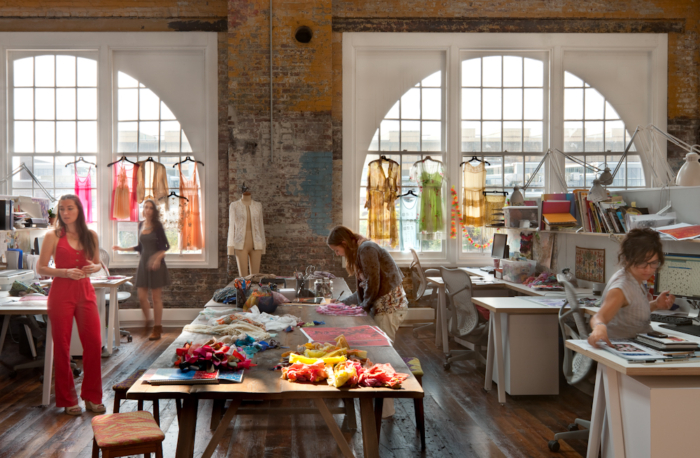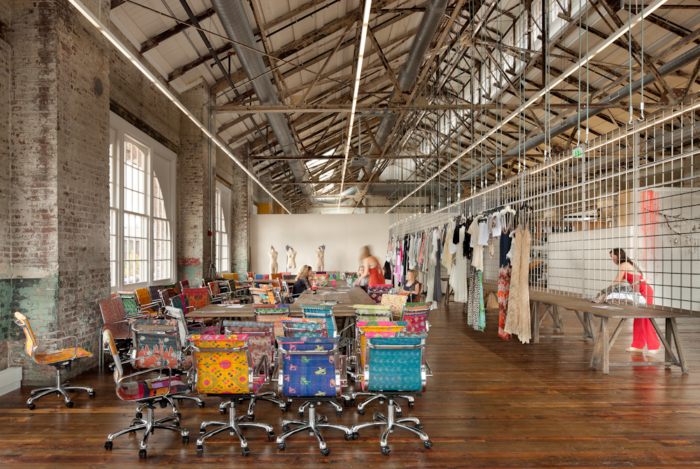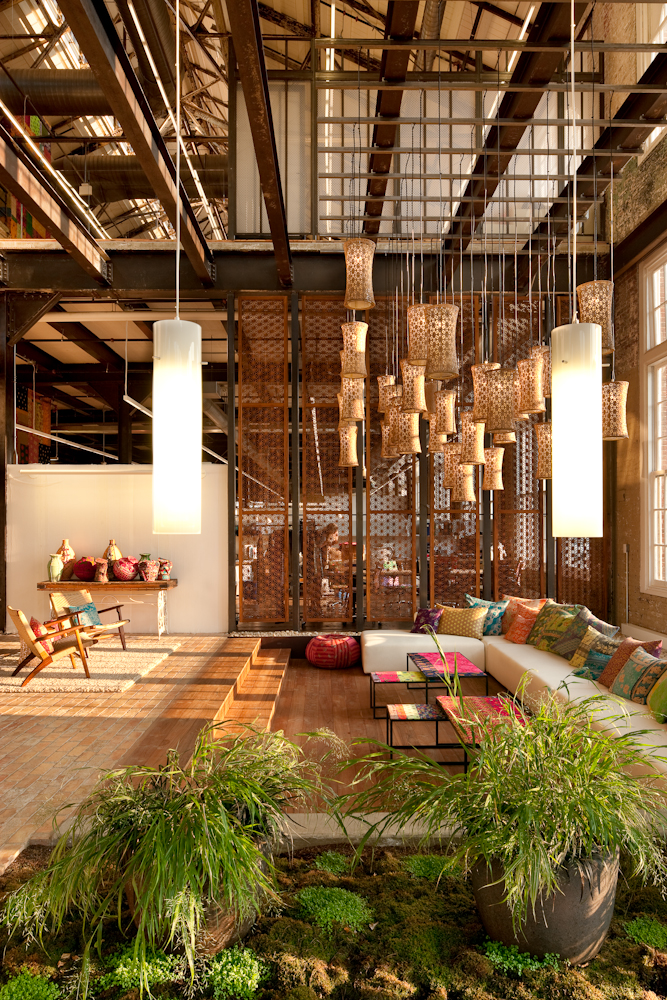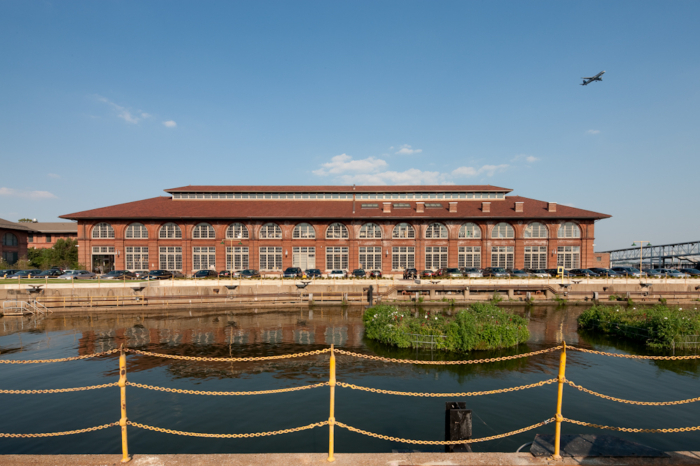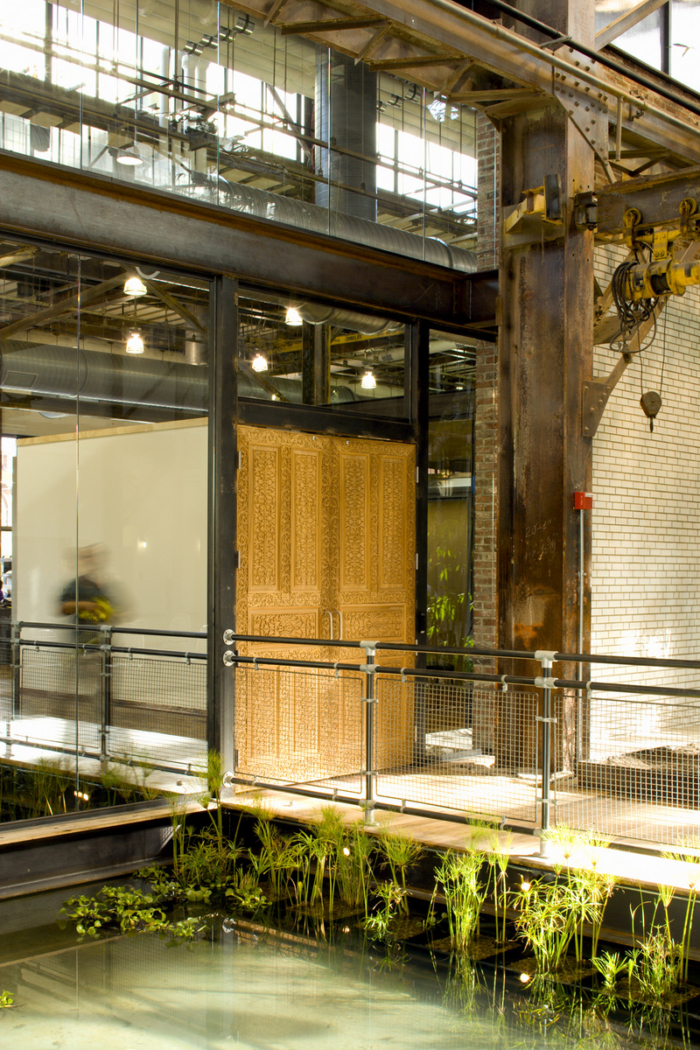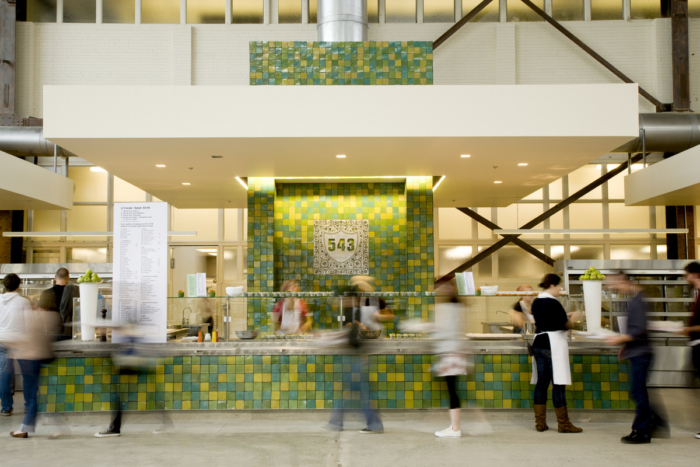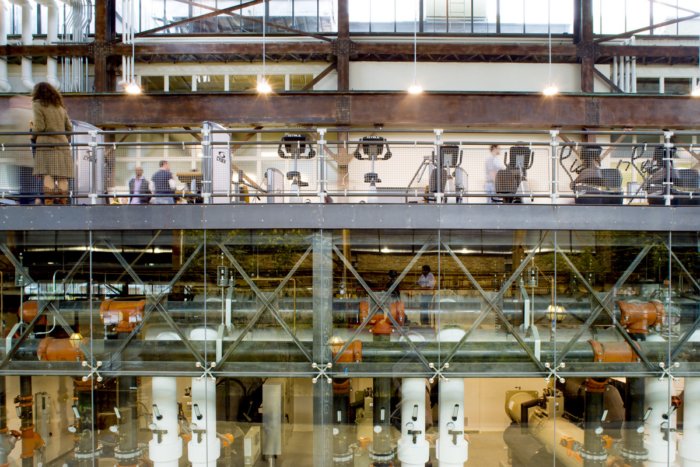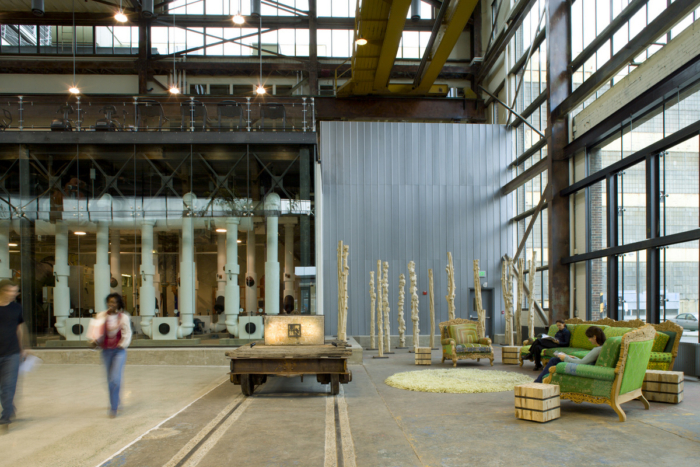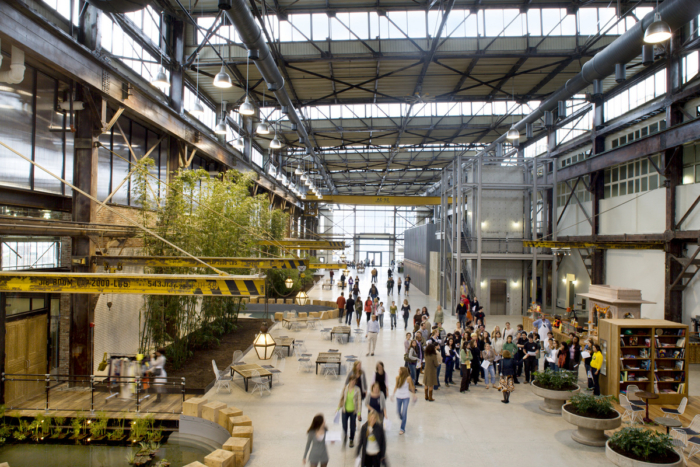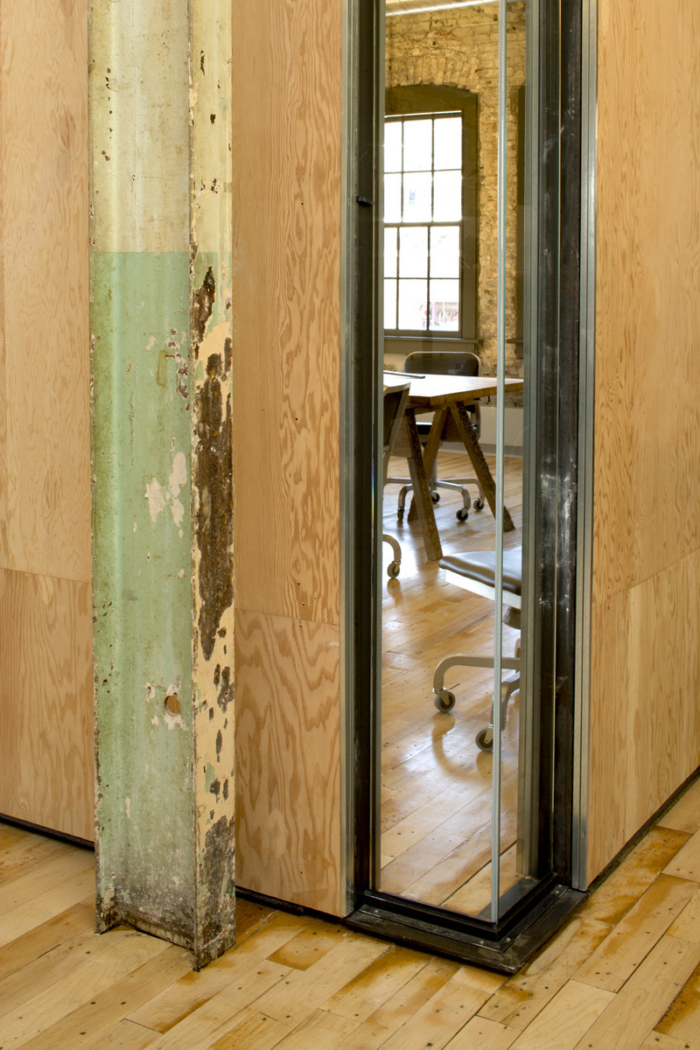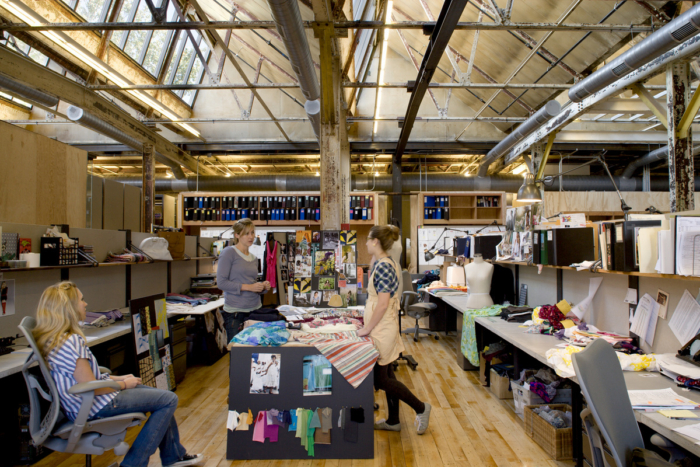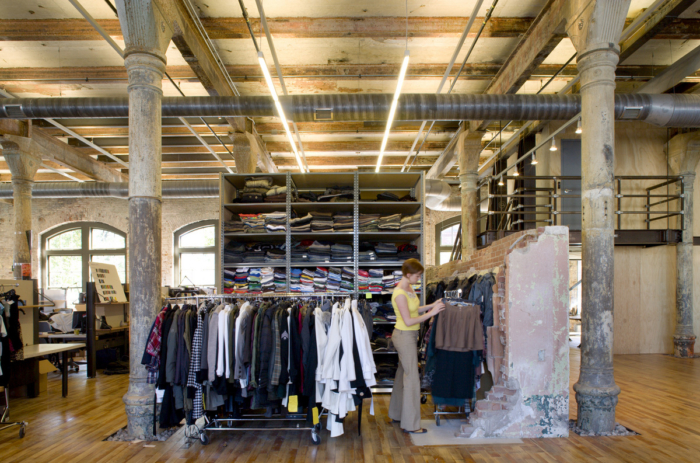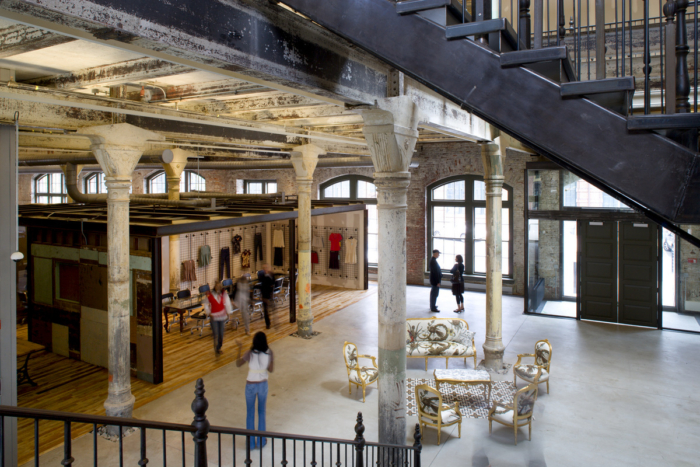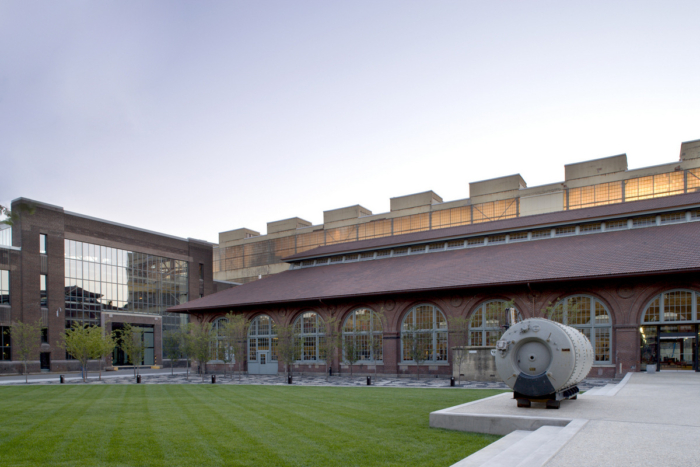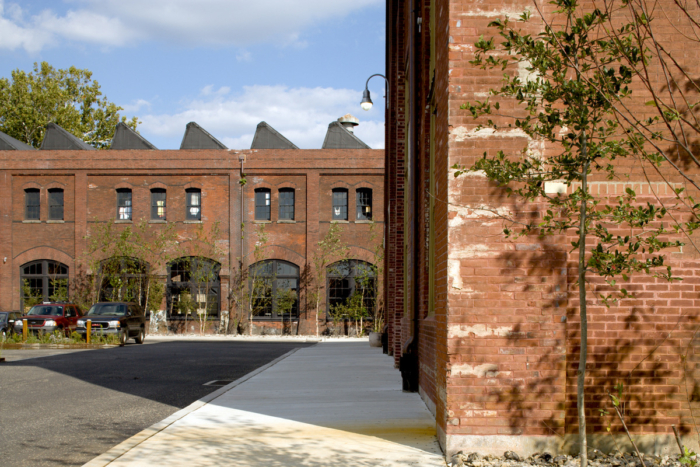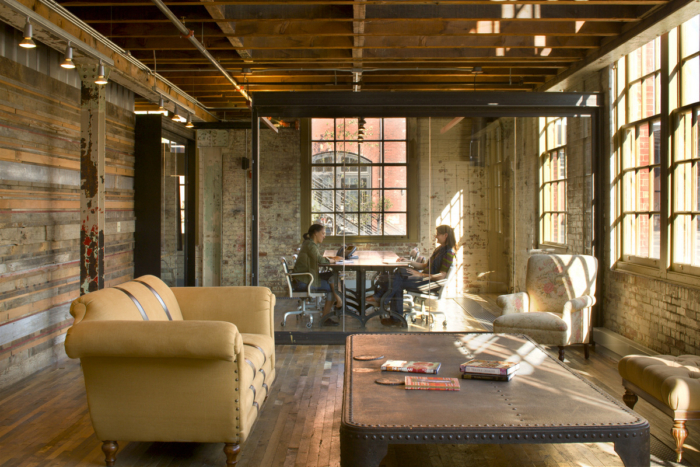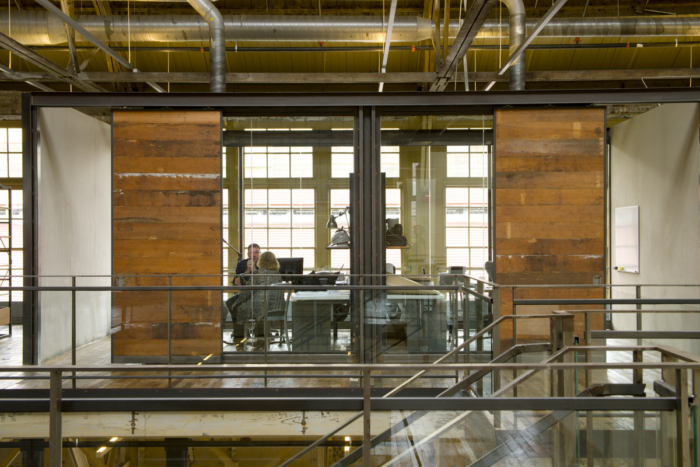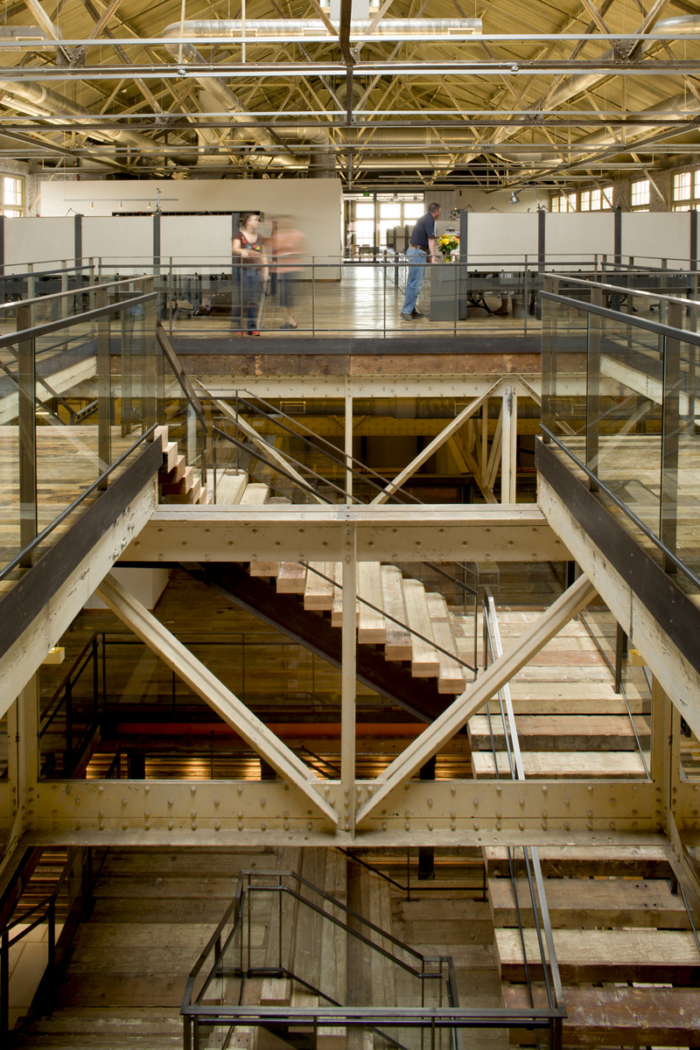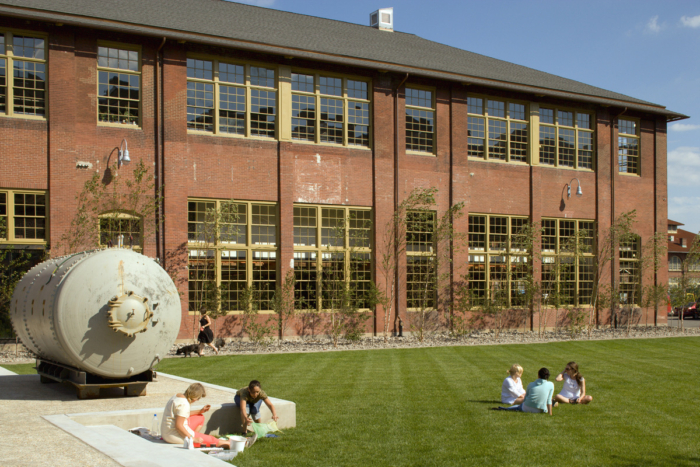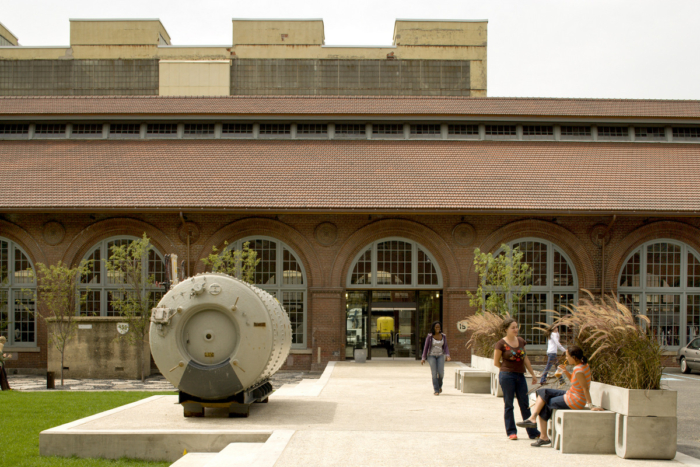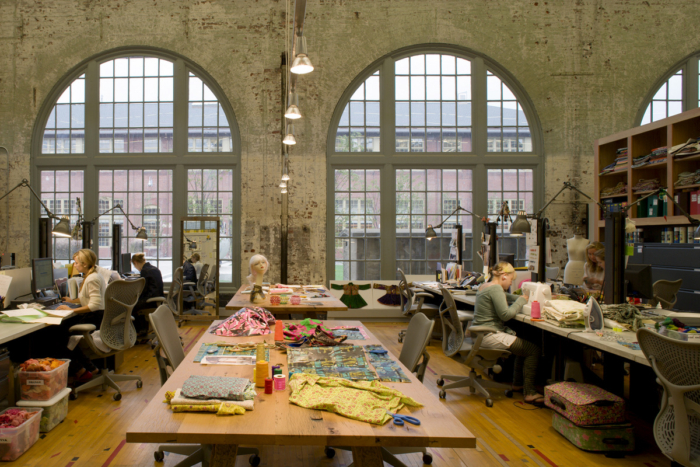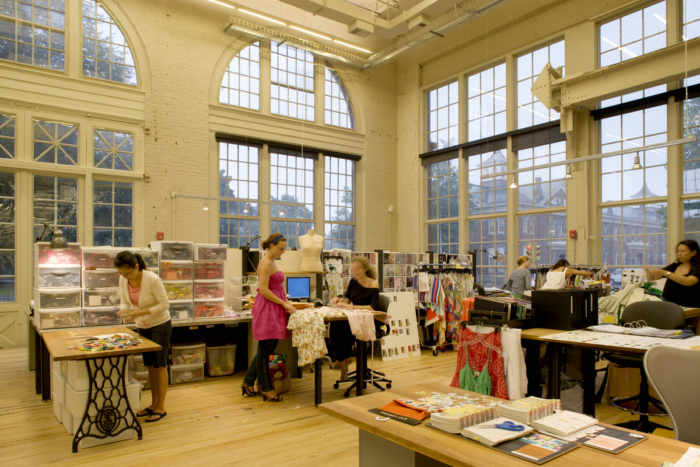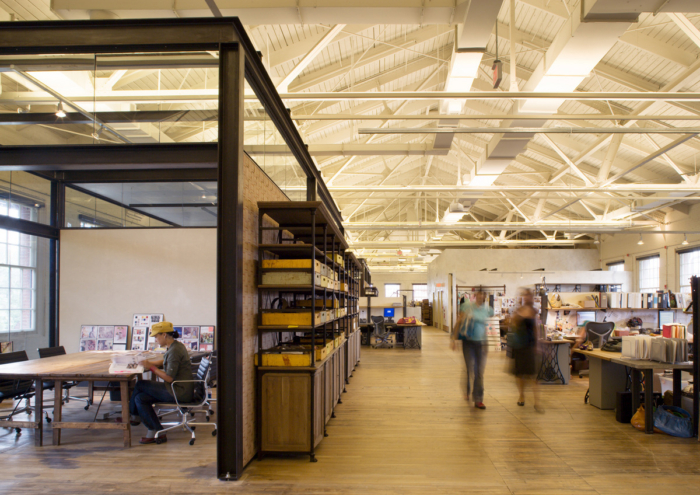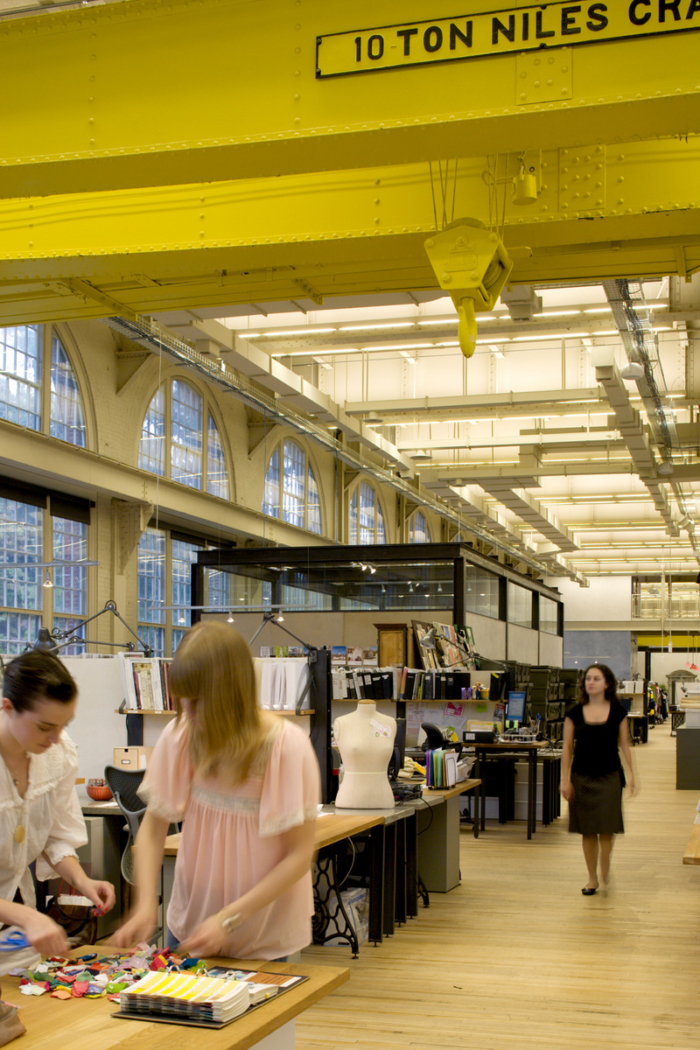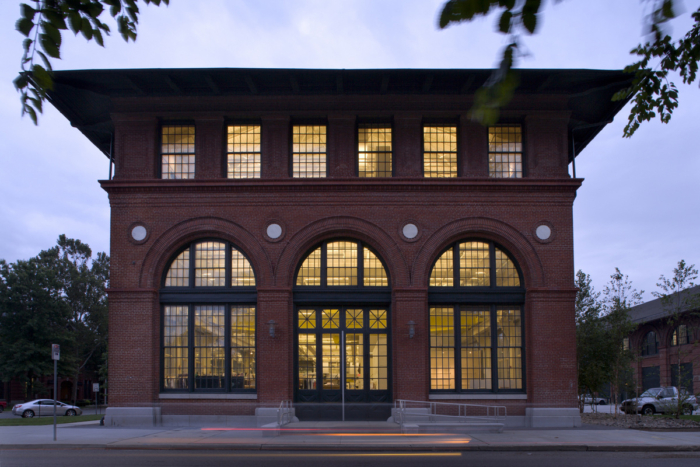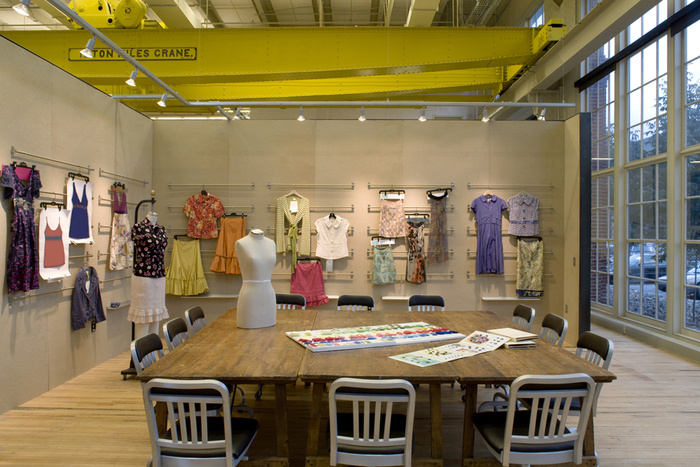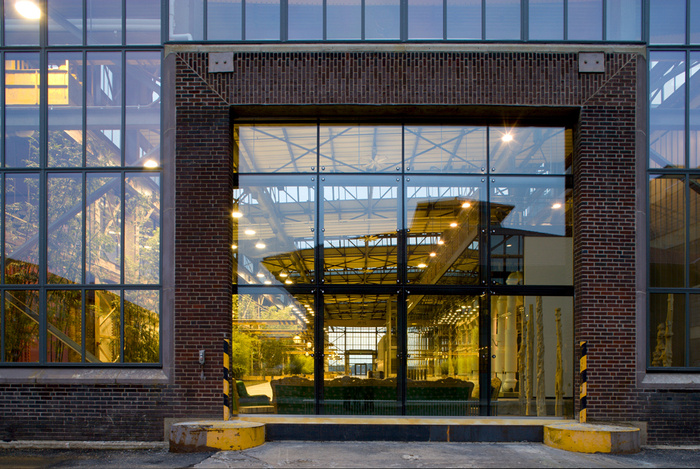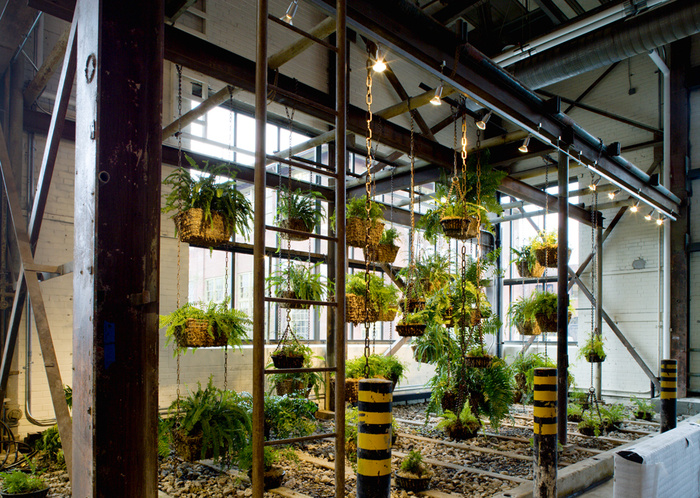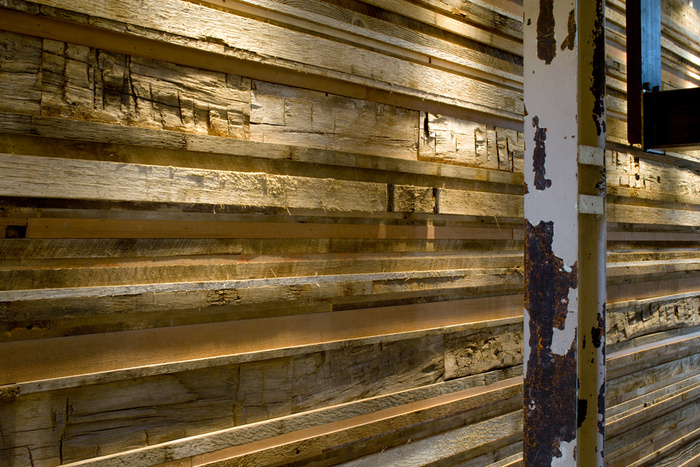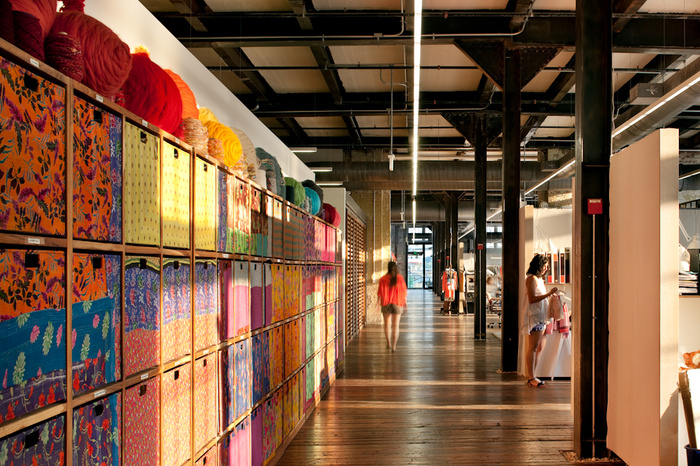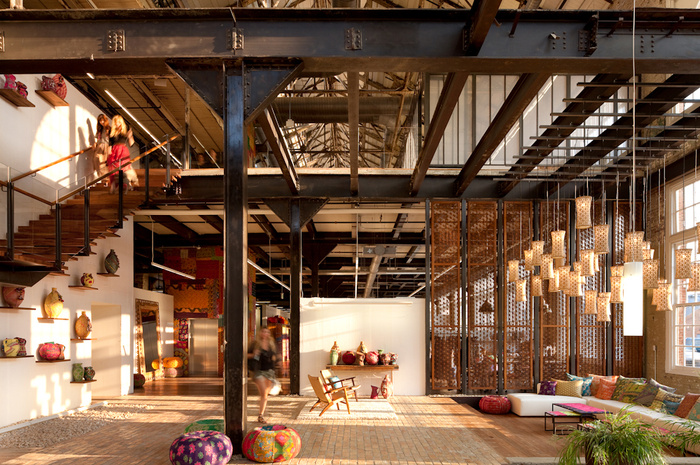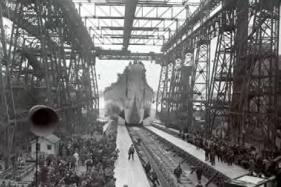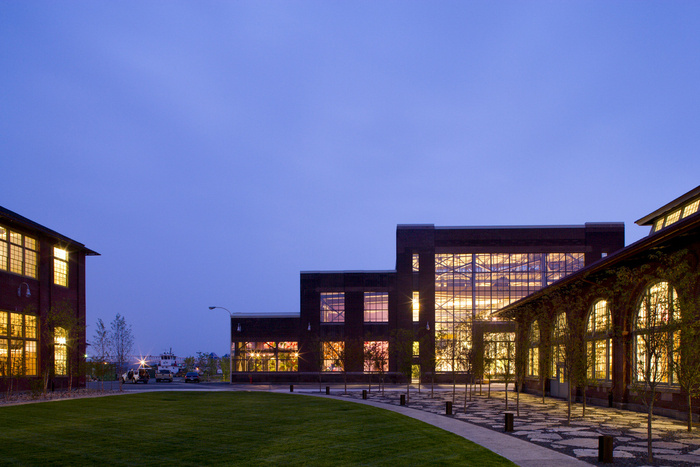
An Inside Look at the Epic Campus of Urban Outfitters
Built from the shell of a dilapidated navy shipyard in Philadelphia, the 100+ year old campus of Urban Outfitters has breathed creative life back into the once industrious building complex. Designed by MSR Design, the 350,000+ sqft project provides an epic backdrop for the brands it houses – Urban Outfitters, Free People, and Anthropologie – to call home.
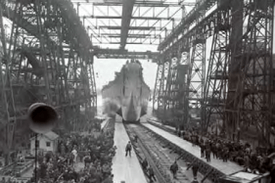 When Urban Outfitters announced plans to relocate to the shipyard, one of the key reasons was to bring the company’s entire workforce into a single location. Previously, staff were spread across six different buildings throughout downtown Philadelphia.
When Urban Outfitters announced plans to relocate to the shipyard, one of the key reasons was to bring the company’s entire workforce into a single location. Previously, staff were spread across six different buildings throughout downtown Philadelphia.
The new campus brings all of the brands together while providing space for staff shared between them – as well as common areas like a cafeteria, coffee shop, library, fitness center, and courtyard.
“The campus is successful because it mirrors Urban Outfitters. The design embraces both the history of the Navy Yard and the client’s culture, blending the two into an incredible layering of old and new. Visible traces of the past remain alongside new insertions.”
While moving into an old building might sound romantic, the process is anything but. Because of the state of disrepair the shipyard was in it was necessary to clean, repair, and replace the various brick, granite, iron, windows. Loose and peeling paint needed to be scraped away.
But rather than completely doing away with the signs of age, rough paint was sealed preserving rough aesthetic. Rugged timbers were salvaged and made into stairways. The architects went so far as to sandblast the steel beams, allowed to rust, then sealed to be perfectly set in color.
Some updates from the 50’s and 60’s like drop ceilings and partition walls were removed to fully bring back the shipyard feel. Essentially the goal was to maintain the entire history of the buildings as opposed to updating them to the standards of a single point in time.
“Whereas the old culture of the Navy Yard was one of the production of objects, the new culture of Urban Outfitters’ campus is one of the production of ideas. The repurposed spaces reflect this. No longer singular areas for manufacturing, the large open interiors incorporate a mix of enclosed public places for meetings, collaboration, and presentations with open studio spaces for creating and testing ideas.”
In terms of the campus’ workplace design, the company and designers looked to create an equal and flat workstation plan. One goal was to minimize private offices and create opportunities for planned and spontaneous interaction – something we’ve seen to be a goal of many larger campus environments.
Designer workspaces include the necessary creative elements like fabric swatches, clothing mockups, buttons, sewing machines. Some tables were even fashioned out of old sewing machines keeping the spaces fun and workshop-like.

Employees enjoy natural light from the huge windows around the perimeter of the building – which is also where the majority of employee circulation happens. And with the campus facing the river, there is no shortage of great views.
“Like ship building in the days before electricity, sewing and crafting requires good light. Rooftop light monitors, skylights, clerestories, and windows were reopened, restored, and replaced (when necessary) to provide plenty of daylight for the various brands’ studios.”
One notable statistic found after the move is that employee morale and wellness have increased with an overall decrease in sick time taking place. Urban Outfitters has also seen employee turnover drop by 11%. No doubt these changes have come through a combination of better work environment, as well as the previously mentioned amenities like the fitness center.
So while we often think about office design as simply making a space look more hip, modern, and up to date. The campus design of Urban Outfitters teaches us that while there can and should be improvements in the aesthetic quality of a workplace, the most important goal of office design is that of improving the quality of worklife for employees – which will in turn enable them produce higher level.
Design: MSR Design
Photography: Lara Swimmer

